Another Volatile Week in Gold and Silver: “Crazier Days to Come” - Weekly Wrap Up
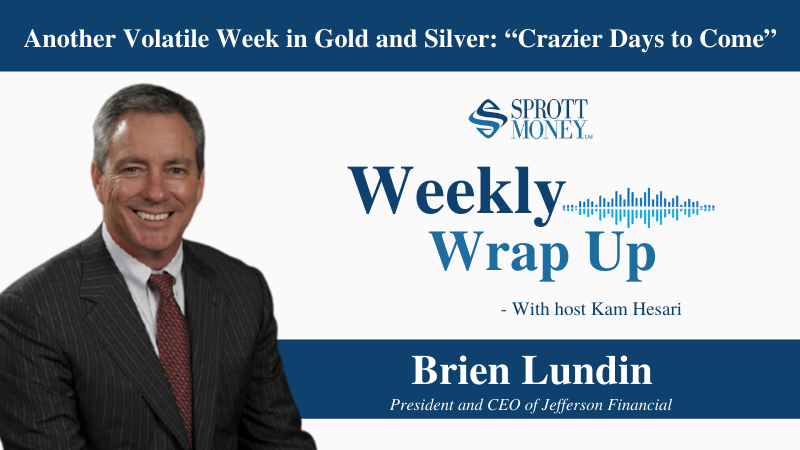
Did you know you can get the Sprott Money Weekly Wrap Ups, Ask The Expert,
special promotions and insightful blog posts sent right to your inbox?
Sign up to the Sprott Money Newsletter here.
With extreme volatility in the markets, inflation that doesn’t look transitory, and a disincentivized labor force, the arguments for owning gold and silver are stronger than ever. This week, guest host Kam Hesari sits down with Brien Lundin of goldnewsletter.com to break down all the gold and silver news you need to get through the rocky times.
In this edition of The Weekly Wrap-Up, you’ll hear:
- What’s driving the extreme market volatility
- Why you need gold in your portfolio—and how much you should have
- Plus: Will strong silver demand continue?
“In short term, the boom/bust cycles as it were—or rather, the short-term volatility—is due largely to the markets trying to interpret every last utterance from the Fed, and their messaging, and what they’re likely to do in the future. So that’s really driving all the markets. And it is the primary driver for all the markets. Longer term there are multi-year, even decadal, boom/bust cycles that have been driven by the Fed and all central banks since 1971, when the Fed severed the last ties between the dollar and gold, when Nixon closed the gold window.”
To hear Brien’s full thoughts on the week’s gold and silver news, listen here:
Announcer: You're listening to the "Weekly Wrap Up," on Sprott Money News.
Kam: Welcome to another edition of Sprott Money's "Weekly Wrap Up". This is Kam Hesari, filling in for Craig this week. Craig will be back next week for the month-end Wrap Up, so please make sure to check that out. This week's guest is Brien Lundin. Brien is the president and CEO of Jefferson Financial, which hosts the New Orleans Investment Conference, which is one of the oldest and most respected investment conferences of its kind. Brien is also the publisher and editor of Gold Newsletter, which has been around since 1971. Welcome to the show, Brien, and thanks for joining me today.
Brien: Wonderful to be with you, Kam.
Kam: Now, before we start, if you enjoy today's podcast, please like, share, and subscribe to the channel you're listening to. Well Brien, another volatile week, to say the least. Are central bank policies directly responsible for the extreme market volatility and frequent boom-bust cycles?
Brien: Absolutely. I look at it in a couple ways. Short-term, the boom-bust cycles, as it were, or rather, the short-term volatility, is due largely to the markets trying to interpret every last utterance from the Fed, and their messaging and what they're likely to do in the future, so that's really driving all the markets. And it is the primary driver for all the markets. Longer-term, there are multi-year, even decade-old boom-bust cycles that have been driven by the Fed and all central banks since 1971, when the Fed severed the last ties between the dollar and gold, when Nixon closed the gold window. And at that point, the Fed was then able to monetize the debt, and essentially to print money without repercussions, at will, and with wild abandon if it liked to. To paraphrase P.J. O'Rourke, it was like giving a teenager a bottle of Jack Daniel's and the keys to the car.
All of a sudden, the Fed immediately drove the car off the road and into the ditch. And that was the inflation of the 1970s. After that, it became more circumspect and cautious, but still, with every recession, and even with any little hiccup in the economy, the Fed had one answer and one recipe. It lowered interest rates. And if you look at a long-term, very long-term chart of the Fed funds rate, going back to the 1980s, you see that in every rate-lowering campaign, the bottom in the Fed funds rate, the bottom in interest rates, was lower than the previous bottom. And then, when the Fed would subsequently try to normalize rates, it would never be able to get back to the old levels. In fact, it could only get up to, say, the midpoint of the previous range. Then the next cycle would come, the next hiccup in the economy, and they would lower again. Again, the bottom would be ever lower.
So, what happened since the early 1980s, we had a stair-step down in interest rates, you know, that really historic, secular bull market in bonds, as rates went ever lower. In 2008, of course, they went to zero for the first time. You know, metaphorically, they had gone from the second floor, took every step down, and now hit the foundation. The next step would logically be into the basement, with negative rates, but the Fed has not yet taken that very serious step to negative rates. They are on the foundation once again, lower, and the trend would indicate that they would have to go, at some point, to negative rates, but we have not seen that yet. So, yeah, everything has been driven, all of the volatility has been driven, by the Fed, by central bank policy. And when markets are all driven by monetary liquidity, then all of a sudden, they all become correlated with that monetary liquidity. In other words, there aren't any contra-cyclical investments. All correlations go to one.
So, you know, people talk about, well, they hope for a bear market or a crash in stocks, to spawn a corresponding contra-cyclical rise in gold and silver, but we really don't need that. The stock market, bonds, gold, silver, precious metals, and tangibles can all rise together, if that flow of liquidity keeps on. And from all indications, it will keep on along that trend, and the Fed will even, you know, exacerbate it and break all of its previous records.
Kam: Speaking of liquidity, it appears the stimulus packages are greatly impacting inflation. I mean, June's increase in consumer prices of 5.4% was the largest monthly jump since August 2008, right before the financial crisis. And that's the third month in a row that inflation was hotter than expected. Also, according to the National Federation of Independent Business, 47% of small businesses raised average selling prices in June. That's the highest since 1981. On top of that, used cars have gone up 30% over the past year. And, of course, we've seen many commodities soar, such as cotton, propane, coffee, sugar, and others. Yet, the Fed says they aren't worried about inflation, and are more concerned about the labor market. They say until we have a lot more job creation, they aren't going to move on rates. Two questions for you. With job openings at all-time highs, and companies desperately trying to fill positions, do you believe stimulus checks have incentivized people not to work, and do you believe inflation is transitory?
Brien: For the former question, obviously, the incentive payments have disincentivized people to go back to work. And no matter what any... I mean, it's really an intelligence test, isn't it? When economists argue against that, they're only demonstrating their own stupidity. There has to be some level of common sense involved in this. And everybody knows that to some degree, primarily, to the greatest degree, the primary factor in keeping people from returning to work is the level of stimulus payments, the super-boosting of welfare payments, etc. If somebody can make more money by sitting on their couch, generally speaking, they're going to do that. It's really the smart thing to do. So, yes, that is slowing down the economic rebound. In regard to inflation, let's give the Fed some credit. There are some supply chain disruptions having an outsized effect on the inflation numbers.
That's obvious that that would happen. And it has, to some degree. But what the Fed and others arguing for transitory inflation are ignoring are all of the other factors that are more than sticky, they are essentially permanent. Wage hikes, for one, we're going to have to have significant wage hikes to entice people to return to work, and, increases in wages, you don't take those away once you've given them. You have increases in home prices that are hard to reverse. Hard to reverse it, really, without crashing the economy. You have rent increases, which is the primary housing component in the CPI. Those will not reverse easily. And there are a number of commodity price pressures that are the result of long-standing, really, years in the making, supply-demand imbalances that will take many years of very high prices to reverse.
Kam: Brien, if the Fed's wrong regarding their transitory inflation narrative, what effect do you think it'll have on the price of gold and silver?
Brien: Well, ultimately it will benefit gold and silver. For a while, a few months ago, as we started to get some indications of higher inflation, gold started to respond positively to that. And that was an important shift in sentiment at the time. For years, really, gold has been a victim of speculators, particularly in the paper gold market, betting on which direction Fed monetary policy would head. So, if there were higher inflation numbers, ironically, the gold would sell off because speculators anticipated that would encourage the Fed to tighten monetary policy. What I think will happen eventually is that you'll see that shift in market sentiment, and investors will again begin to consider gold and silver as inflation hedges, as investors come to realize and fully understand the trick box that the Fed is in. That the Fed, despite rate hikes, or even tapering of quantitative easing, to whatever degree it can do so, the Fed still has to keep monetary policy well behind inflation. So, we will have negative real rates essentially forever, under the current monetary regime. And that's because debt loads have risen so high that they would essentially crater the Federal budget, and corporate and individual household budgets, if inflation is not allowed to depreciate the value of those debts.
Kam: Speaking of the Federal budget, with stimulus checks coming to an end, the Child Tax Credit has started, and is expected to be extended for years to come. Is this a stepping stone onto universal basic income? And how do you think these kinds of programs will impact the U.S. dollar and the price of gold?
Brien: Yeah, it is a stepping stone. And, you know, universal basic income is a huge step that I'm not sure is politically possible at this point in time. So, rather than do it in, you know, in one fell swoop or one program, it's going to be eaten away at the edges, and accomplished through ad hoc programs, and that's the way it's happening right now. So, it is a step toward that. So, rather than get actual universal basic income, we'll see a de facto universal basic income, based on all these government programs. Now, of course, as greater and greater government spending, which means greater and greater dollar creation, all of this will be bullish for gold and silver and other tangible investments. Basically, anything that benefits from the depreciation of the currency will benefit from this over-creation and expansion of the currency. So yeah, more spending equals more dollar creation. More dollars mean greater inflation, less value for dollars, and the monetary metals will obviously benefit from that over the long term.
Kam: Brien, more than 85% of central banks around the world, including the Fed, are considering launching digital currencies. Should we be worried about digital currencies, given the possibilities of negative interest rates, wealth taxes, and the currency expiring if it's not spent in a certain timeframe? Also, can gold and silver be a solution?
Brien: Gold and silver would be a solution, as long as they're allowed to be. The ultimate end game of all of these digital currencies, official digital currencies, the end game is to move toward a cashless society, which is a power move, and removes power from the individual. And it's a way of making it more efficient, even unavoidable, to collect taxes, for individuals to pay taxes, to control consumer decisions, etc. So, yeah, the end result, if they can get there, would be to remove the ability of individuals to choose what to buy, when to buy, and how to buy. And whether they pay taxes and how they pay taxes. In effect, the government will remove your taxes, and you'll have to argue for the return of your money. Yeah, that is the trend. Now, an outgrowth of that would be that a number of the advantages or uses of crypto, being the settlement of payments in particular, would be taken over by these government currencies, so that would remove some of the utility of cryptocurrencies, and therefore, you know, one of the pillars of the investing argument for cryptocurrency. So, I think that official government digital currencies are a prime competitor and danger to the entire cryptocurrency movement.
Kam: Very alarming, but true. On a positive note, the World Silver Survey shows expectations for a rise in total silver demand in 2021 of 15%, with a 26% increase in physical investments. Why do you think that is? And do you expect this trend to continue?
Brien: Yes, I do. I do expect that to continue, because silver is a way to naturally leverage gold, and we're seeing a lot of, in this kind of meme investing environment, we're seeing a lot of people pointing to that fact, that the silver market has been manipulated to a significant degree through the use of paper silver investments, futures, and options and the like. So, there's been this kind of Reddit-inspired Wall Street silver movement that's taking at least a small bar demand off the market, so that's increasing physical demand. But in every bull market that we've seen in the history of freely-traded gold as an asset class, we've seen silver outperform gold, naturally so, and end every bull market that's based on long-standing monetary concerns. That's precisely the kind of bull market we're in right now. So, all evidence points to the fact that silver will significantly outperform gold. I believe, and I'm confident that we'll continue to see investment demand for silver continue to grow and be strong, and really increase as gold starts to validate this bull market scenario.
Kam: While we're on the subject of gold, do you believe in having gold in a portfolio as an asset diversifier? And if so, what percent?
Brien: Yeah, I do. Studies have shown that over decades, that having gold at the, say, 5% to 10% level is an important diversifier in a portfolio, in an otherwise adequately diversified portfolio. Modern portfolio theory has shown that gold, at those levels, say 5% to 10%, would, really increases the risk-adjusted return of that portfolio, gets that portfolio close to the so-called efficient frontier, where you maximize your risk-adjusted returns. Now, that said, since 2008 in particular, all of the asset classes, again, have been driven by Fed monetary policy, so I think those correlations, over time, back-tested, will lose their efficacy, and lose their effect. Now, going forward, that actually argues for a greater allocation toward precious metals, because of this monetary policy, really unprecedentedly easy monetary policy, and really, the reliance of all of the financial asset classes on the continuance of that easy money policy, or policies. So, in that kind of an environment, that would argue for a greater allocation, say, closer to 20%, in precious metals and precious metals-related investments, like mining stocks.
Kam: Brien, many investors requested I ask you if the gold and silver correction is almost over?
Brien: I hope so. That's not an answer, I realize. Right now, I'm cautious on the metals. Gold in particular needs to prove to me that it can mount a rally and get past some technical levels. It needs to show...it needs to get the 50-day moving average and the 200-day moving average headed upward again. It needs to go back and clear those technical levels that it had so easily cleared before the big sell-off in June. So, I want it to show me a more consistent rebound in the days just ahead. Now, that said, there are a couple of things that are arguing in the favor of an imminent rebound in the metals. One is essentially seasonality. We've typically seen, or historically, gold and silver have hit a nadir, a bottom, in, say, mid-July to mid-August, and then strengthened going into the fall. We have not seen that in the past two summers. In fact, we've seen strength, considerable strength, in the metals throughout the summer, over the last two years. This year is playing out more according to the historic pattern, so we should have seen a bottom sometime really around now, and we should be seeing some seasonal strength in the metals going forward.
The other factor that I think argues in the favor of a rebound in the metals is Fed policy. One of the things that's been keeping the metals in check recently has been this messaging, new messaging, by the Fed, these trial balloons it's been floating out into the markets about raising rates in 2022, the possibility of tapering its quantitative easing program. Everyone expected the Fed to begin, say, in this September-October timeframe to pull back on its quantitative easing, its asset purchases. That may not happen now because of the spread of the Delta variant. And we're just going to have to see how that plays out over the next few weeks. If in fact the Fed starts to shift its messaging back to a more dovish stance, and the market's expectation shifts to, say, early 2022 before we see any tapering, that would be very supportive of gold and silver, and could help fuel that early fall rally that historically we've seen.
Kam: Brien, we're living in crazy times. What do you see the rest of the year looking like?
Brien: Well, more crazy. You know, one of the things I've talked about repeatedly since 2008 is that crazy talk, crazy ideas have been normalized. Everything we're seeing right now and talking about, as far as quantitative easing, Fed asset purchases, even of mortgage debt, Fed asset purchases of corporate debt, the level of interest rates at 5,000-year lows, all of this was virtually unfathomable before 2008. And if you would have talked about them prior to 2008, you would have been regarded as a kook and a crank. Now, all of this, all of these unprecedented monetary policies and unprecedented policies taken to degrees that are ever greater than they were even months before, all of this has been normalized. It's become accepted. If you watch CNBC and you read the mainstream financial media, they talk about these crazy policies as if this is normalcy, and the new normal, as it were. But they're anything but. We are operating on the fringes of what has historically been imaginable as monetary policy, and that argues for crazier days to come.
And we will see the Fed...if there's one thing you can bet on and be confident in, we will see central banks not just continue these policies, but accelerate them. The markets are not so much addicted to easy money as ever-easier money. So the Fed keeps having to ratchet up the flow of monetary adrenaline because the markets are addicted, and they are growing to be, you know, develop tolerances, just like an addict. So, it takes ever-greater injections of the drug, ever-greater injections of this monetary adrenaline, to get the same effect as before. That, of course, is a trajectory and a trend that will not end well. And whether that ends in this boom-bust cycle, or the next one, or the one after that, the ultimate end game is obvious, and that is the loss of credibility in fiat currencies in general. So, generally speaking, you want to be in gold and silver as these trends continue.
Kam: Very well said, Brien. Thanks for sharing your insights with us. Please let our viewers know where they can find your work.
Brien: Kam, it's been my pleasure. Wonderful to have this in-depth discussion. People can look for what we're producing at goldnewsletter.com. That is, obviously, the Gold Newsletter website. And we also have a free e-letter called "Golden Opportunities," that they can sign up for there. And in addition to our subscription product, which is "Gold Newsletter," we also have an in-depth report, a buyer's guide for investors in gold and silver. And we have our annual investment conference coming up this fall. They can learn more about that at neworleansconference.com. It will be in-person. It will be the first big event in the sector that will be in-person. And it looks to be like it's going to be a blockbuster that people will be talking about for years to come. We've got an extraordinary roster of speakers coming, and I urge anyone to go to neworleansconference.com to check it out.
Kam: On a final note, if you're looking for the best prices on gold and silver, please check out sprottmoney.com. You'll find a great selection at prices that are extremely hard to beat. Also, if you're looking to invest a substantial amount in precious metals, we can even provide a better price, and discuss our highly-regarded storage programs in depth. Just give us a call at 1-888-861-0775. Well, that's it for this edition of Sprott Money's "Weekly Wrap Up." I hope you found it of value. Please like, share, and subscribe, and see you next week.
Don’t miss a golden opportunity.
Now that you’ve gained a deeper understanding about gold, it’s time to browse our selection of gold bars, coins, or exclusive Sprott Gold wafers.
About Sprott Money
Specializing in the sale of bullion, bullion storage and precious metals registered investments, there’s a reason Sprott Money is called “The Most Trusted Name in Precious Metals”.
Since 2008, our customers have trusted us to provide guidance, education, and superior customer service as we help build their holdings in precious metals—no matter the size of the portfolio. Chairman, Eric Sprott, and President, Larisa Sprott, are proud to head up one of the most well-known and reputable precious metal firms in North America. Learn more about Sprott Money.
Learn More
You Might Also Like:




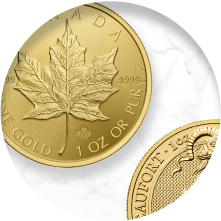

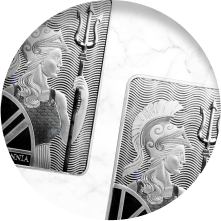



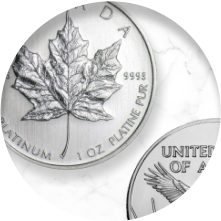

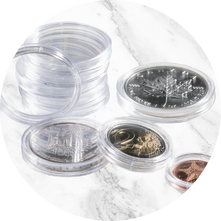



Looks like there are no comments yet.